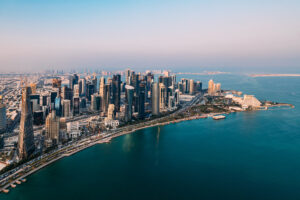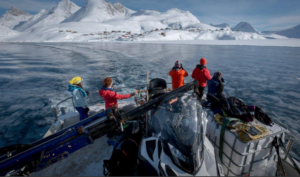Taste high life on Nepal climb
Matthew Kitchin —
IT’S -15C at 6am, when a warm, yellow light spreads across the upper flanks of Everest and reveals an incredible banner of spindrift being wind-blasted from its peak.9 ( Mat 5 , 2012 )
Clearly visible are the summit pyramid with its yellow band of rock, and Hillary’s Step at 8750m the final crux for Sir Edmund Hillary and Tensing Norgay before they conquered the 8850m mountain in 1953.
Just 15km away as the crow flies, Everest is incredible inspiration for our weary team of seven climbers.
We are working our way slowly up a snow ridge 300m below the summit of Lobuche East (6120m) after setting out from Camp One at 2.30am.
The team is clipping on to a line of white Korean rope that provides restraint from a fall.
Wearing thick down jackets and enormous mittens to prevent frostbite, we climb slowly in the thin air. Our pace reduces to a crawl when we have to kick our crampons into the snow. Every few steps we stop and lean on our ice axes to catch our breath.
A few sections of the route are safe enough to climb free of the ropes. But elsewhere a fall would be deadly.
An expertly guided trip on a peak such as Lobuche East is a relatively safe and inexpensive way for trekkers to taste high-altitude mountaineering.
This expedition is run by Adventure Consultants, a New Zealand company with a long history in Nepal.
Among our group are two Sherpas and a friend, Verne, who has never climbed but is a strong bushwalker.
The rest of us Paul, David, Mark and myself are using Lobuche East to acclimatise before a crack at the neighbouring Cholatse, a rarely climbed 6440m peak with far steeper route and greater dangers.
Our Lobuche East expedition starts like every other with a flight in a small plane from Kathmandu to the village of Lukla and its inclined landing strip.
Our gear is sent ahead by yak train to Base Camp, in a small, cold valley at the base of the mountain. There are no roads in the region.
Many trekkers have died of altitude sickness merely by ascending more than the recommended 500m a day, so we take it easy, conserving energy and resting in villages along the track.
Tea houses at Monjo, Namche Bazaar, Upper Pangboche, Khumjung and Pheriche provide accommodation before we switch to tents at Lobuche East Base Camp. We take a high route to escape the “trekkers’ highway” in a bid to stay healthy and avoid picking up diseases that can ruin the climb.
At Upper Pangboche, we stay at the excellent lodge of the famous Sherpa climber Phu Tashi, who has reached the summit of Everest 11 times.
Phu Tashi arranges for our group to be blessed by the Buddhist lama, a Geshe (highly attained scholar), so that we stay safe in the mountains.
Finally we reach Base Camp (altitude 4800m) and make our final preparations.
We set up a rope on a rock slab to practise using a jumar an ascender that is leashed to a climber’s harness and clipped to a fixed rope on the mountain. The jumar slides up the rope easily, but grips it under downward force to prevent a fall.
Verne picks up the technique in no time and we return to camp for a final gear check and to pack enough food for three days’ climbing.
At first light, we ferry tents and gear up to Camp One (5200m).
It’s not technically difficult but the trip does tax the lungs.
We return to Base Camp and prepare for the full assault on Lobuche East. The mountain is classified by the Nepalese Government as a trekking peak, which attracts a lower permit fee than an expedition peak such as Everest. But it is no walk in the park.
Climbers must be prepared for hard labour, frightening storms and extreme ice conditions, and must leave their sooky pants in Australia.
After another trip to Camp One, we rise at 1.30am what’s called an alpine start on summit day.
Luckily, the weather is perfect and the sky is a spectacular display of stars.
Typical of most first-time alpinists here, Verne handles the exposure, cold and fatigue extremely well. The last 300m slows us but sunrise at 6.30am brings colour and warmth.
It is 8.30am when we are all standing on the summit. Not a breath of wind disturbs a sea of peaks from Tibet all the way down the spine of the Himalayas towards Pakistan, and south to India. And Everest stands there biggest of all, a stone’s throw away.Exhausted from the ascent, we fuel up and take in plenty of fluids before slogging back down to Camp
One, which we strip our tents and other gear, before dropping right down to Base Camp and a huge celebration. Verne is ecstatic and already plans a skills course in New Zealand so he can return to the Himalayas. Paul, David, Mark and I head to Cholatse a few days later.
Arriving in condition to handle the altitude is a great advantage on the steep and awkward route. We reach the summit but two climbers from a Korean team fall to their deaths during our time on the mountain.It’s a blunt reminder about pushing the limits.
Adventure Consultants leads climbs of Lobuche East as part of a 27-day Three Peaks Trip in Nepal, which also ascends Island Peak (6189m) and Pokalde (5806m). The trip, which runs November to December, costs $US6000 ($A5850).














